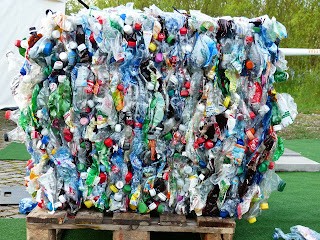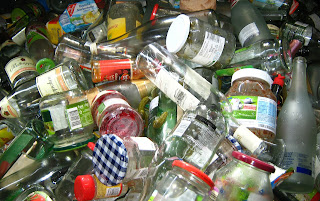What are rare earth elements?
Rare earth elements is a set of chemical elements on the periodic table. Scandium, Yttrium, Lanthanum, Cerium, Praseodymium, Neodymium, Promethium, Samarium, Europium, Gadolinium, Terbium, Dysprosium, Holmium, Erbium, Thulium, Ytterbium and Lutetium are the rare earth elements. You can find this on your periodic table.
 |
| Source: Pixabay (CC0) |
21 Sc Scandium is rarely used due to the lack of predictable, safe and longterm commercial application. It used to be employed in aerospace and has recently received more attention for its use as an aluminium alloy (less than 1% of Scandium inside). Scandium-Zirkonia is also used as an electrolyte in SOFC (solid oxide fuel cells).
39 Y Yttrium has many uses and functions. Its most important use is the creation of the Europium phosphor, which is used in CRT and LED screens to produce red light. An Yttrium-Iron garnet is used in microwaves (as a filter), as an audile transducer / transmitter, in a Faraday Rotator and for MOI (magnetic optical imaging) in a superconductor. Yttrium is also used in small amounts to increase the strength of aluminium alloys.
57 La Lanthanum alose finds its use in many items.
Here are some of them: 1. under the term phoslock, it gets rid of phosphates in lakes and pools. 2. Lanthanum oxide is used in optics for camera - and telescope lenses due to its high refractive index and low dispersion. 3. Mischmetal - also called Ferrocerium or Auermetall - is an alloy with 50 % Cerium and 25 % Lanthanum inside. It's used to create sparks (flint spark lighter).
Let's keep the other applications of this rare earth element short and simple: energy conservation system, electron microscopes, scintillator, radiometric dating and carbon arc lamps.
58 Ce The most abundant rare earth element available,
Cerium, has numerous commercial applications. Flints, permanent magnets, Tungsten electrodes, carbon-arc lighting, petroleum catalyst and as a component in screens.
59 Pr Finally we have an element which is used for recycling industry magnets, namely
Praseodymium. A certain share of Praseodymium is in high power magnets together with Neodymium, Iron, Boron and Dysprosium. We'll cover this in greater depth in another Q&A. What's also important to know: the discoverer of Didymium - which is composed of Neodymium and Praseodymium - thought that the composition was actually one element. Carl Auer von Welsbach actually isolated both rare earth elements and named them Neodidymium and Praseodidymium, which was later shortened.
 |
Imagine Ned Flanders saying "Praseodidymium magnet".
Would probably sound something like "Praseodiddeledidium Magnereeno". |
Other uses besides recycling magnets: 3-8% part of Mischmetal, strengthening of metal (dopant), optical magnifying, Weldergoggles and Glasblowergoggles, flint rock, enamel colouring and as glass colouring.
60 Nd Neodymium - as a free element - never occurs in nature, as it oxidizes when it comes in contact with air. However, it can be found within ores like bastnäsite and monazite. It functions as the main compound of rare earth high power recycling magnets but has other distinct utilizations. For example, Neodymium glass is used as a rear-view mirror to minimize glaring from drivers behind you. It is also used - like other rare earth elements - as a glass colouring and enamel colouring. It also finds its application in lasers.
61 Pm Promethium - also written as
Prometheum - was first separated in 1945 by the Oak Ridge National Laboratory from a byproduct of nuclear fission. In fact, that's still a method of obtaining Promethium today. As you might suspect, Prometheum is radio-active and therefore harmful to humans. It's used in nuclear batteries, luminous paint, missiles and possibly has a future in portable x-ray devices for space exploration.
Promethium is the least abundant of the lanthanides.
62 Sm Samarium emerges as a profitable high-power magnet in combination with Cobalt. It isn't stronger than a Neodymium (and Boron Iron Dysprosium Aluminium) alloy. Nevertheless it makes quite the powerful magnet. Sometimes it is preferred over the Neo-Magnet as the costs are a lot lower. I'll create a separate article for magnets that depend on rare earth element.
Other uses are as a control rod in nuclear reactors, radioactive dating, catalysis of chemical reactions, x-ray laser, maser, cancer treatment and in the engine of solar-powered vehicles.
63 Eu Europium puts the 'rare' in rare earth elements, as it is the scarcest element in the entire universe. It doesn't have a lot of (profit-making) application. Like a lot of other elements, Europium is used as a doping agent in (some) optical equipment. As an oxide, it finds its use as red phosphor in computer and television screens. Another application of Europium I know of are drug tests, in which it determines what amount of any kind of drug is present in the blood of the 'donor'. I've linked to a pdf document below that serves as an example.
Source:
https://tools.thermofisher.com/content/sfs/manuals/Eu_Instrument_Control_AppNote_12Nov10.pdf
64 Gd Gadolinium cannot be found in its pure form in nature but is abundantly available in bastnasite and monazite. The founder of the element - Johan Gadolin - first found it in an ore he named after himself, namely Gadolinite. When you'd expect Gadolinite to be filled with Gd, then you'd be wrong. It's quite ironic that the nameholding ore only has tiny amounts of Gadolinium.
You can find Gadolinium in SOFCs (electrolyte), x-ray devices, optoelectronics, microwaves, nuclear reactors, nuclear submarines, MRI scanners and in TV screens (green phosphor).
65 Tb Terbium is partially relevant as it is an additive in the Neodymium power-magnet. Other applications include as crystal stabilizer in fuel cells, as green phosphor in screens, for trichomatric lighting technology and as a doping agent for certain materials. Together with Dyprosium, it is used in Terfenol-D (more info on that in the next element).
66 Dy The element '
Dysprosium' is an additive of Neod.-recycling magnets as well. We'll expand on this in another section. Next to its function as a super-magnet, data storage applications employ a different advantageous attribute from this element, namely its magnetic susceptibility. It also puts the 'D' in 'Terfenol-D'... literally. Terfenol-D is a magnetostrictive material that is outrun by another compound called Galfenol (without the -D). Due to its high thermal neutron absorbtion, it is also used for making control rods in nuclear reactors.
67 Ho Holmium is also a rare earth element with magnetic properties that are not yet discovered as of now. That makes this element my personal favourite rare earth element. Try to google "holmium magnetic properties" and you'll only find scholarly articles that imply that research is on the way or broad very broad wikipedia-like descriptions of Holmium as an element (its history, its physical/atomic/chemical properties, health benefits/empediments, etc.).
Anyway, it is my favourite element as it may contribute to the development of even more powerful magnets.
Holmium is used for lasersurgery due to low tissue penetration rates. A thulium laser is the only laser I know of that is more shallow.
68 Er The chemical element
Erbium with atomic number 68 isn't found in nature as a pure element. Fibre-optic-cables and other technology that rely on on fiber-optic make use of Erbium as a dopant.
Other uses: Laser amplification, vanadium steel, glass colouring, cryocooling instruments, laser surgery and laser enamel treatment and as a porcelain colourant.
69 Tm Thulium is an element from the set of lanthanides. It isn't employed in lots of applications and items, due to its rarity and therefore due to its high price. There are a few field of expertise where Thulium is unsubstitutable: laser surgery. It's also used in x-ray machines.
70 Yb Ytterbium is a silver coloured, soft metal. If it's put under high enough pressure, it can function as a semiconductor device. In nature, this element cannot be found in its pure form. It mostly appears in monazite, where it is mostly mined from.
Ytterbium is a component in many industries and products. Here are some broader categories in which Ytterbium is used: metallurgy, solid-state-laser / DCF-Laser, the world's most reliable atom-clock, medicine, doping agent in steel and it has been used once as a toothfilling alloy in the Dental prosthesis industry.
71 Lu The element
Lutetium is last in the series of Lanthanides. It has a bright silver colour and is quite hard and dense. There aren't copious amounts readily available in the earth's crust, but I wouldn't call it rare either. Problems do not arise with obtaining Lutetium containing ores like monazite, but with the separation of Lutetium from other chemical elements. This fact still makes pure Lutetium very expensive (ca. 1/4th price of gold).
Probably due to its high price, there still aren't a lot of applications for Lutetium. A very specific application of this element is Lutetium-Hafnium radiometric dating method, which is used to determine the age of rocks (or meteorites). Other uses are as medicine, catylyst, dopant and in magnetic bubble memory devices.







